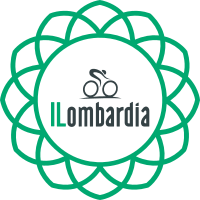
Alfredo Binda was an Italian road cyclist of the 1920s and 1930s. He was the first to win five editions of the Giro d'Italia, and a three-time world champion. In addition he won Milan–San Remo twice, and the Tour of Lombardy four times.

The Giro d'Italia is an annual multiple-stage bicycle race primarily held in Italy, while also starting in, or passing through, other countries. The first race was organized in 1909 to increase sales of the newspaper La Gazzetta dello Sport, and the race is still run by a subsidiary of that paper's owner. The race has been held annually since its first edition in 1909, except during the two world wars. As the Giro gained prominence and popularity the race was lengthened, and the peloton expanded from primarily Italian participation to riders from all over the world. The Giro is a UCI World Tour event, which means that the teams that compete in the race are mostly UCI WorldTeams, with some additional teams invited as 'wild cards'.

Felice Gimondi was an Italian professional racing cyclist. With his 1968 victory at the Vuelta a España, only three years after becoming a professional cyclist, Gimondi, nicknamed "The Phoenix", was the second cyclist to win all three Grand Tours of road cycling: Tour de France, Giro d'Italia, and Vuelta a España (1968). He is one of only seven cyclists to have done so.

Angelo Fausto Coppi was an Italian cyclist, the dominant international cyclist of the years after the Second World War. His successes earned him the title Il Campionissimo. He was an all-round racing cyclist: he excelled in both climbing and time trialing, and was also a good sprinter. He won the Giro d'Italia five times, the Tour de France twice, and the World Championship in 1953. Other notable results include winning the Giro di Lombardia five times, the Milan–San Remo three times, as well as wins at Paris–Roubaix and La Flèche Wallonne and setting the hour record (45.798 km) in 1942.

Stefano Garzelli is an Italian former professional road racing cyclist, who competed as a professional between 1997 and 2013. The high point of his career was his overall win in the 2000 Giro d'Italia, after a close three-way competition with Gilberto Simoni and Francesco Casagrande.
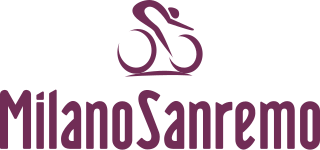
Milan–San Remo, also called "The Spring classic" or "La Classicissima", is an annual road cycling race between Milan and Sanremo, in Northwest Italy. With a distance of 298 km it is the longest professional one-day race in modern cycling. It is the first major classic race of the season, usually held on the third Saturday of March. The first edition was held in 1907.

Damiano Cunego is an Italian former professional road racing cyclist, who rode professionally between 2002 and 2018 for the Saeco, Lampre–Merida and Nippo–Vini Fantini–Europa Ovini teams.
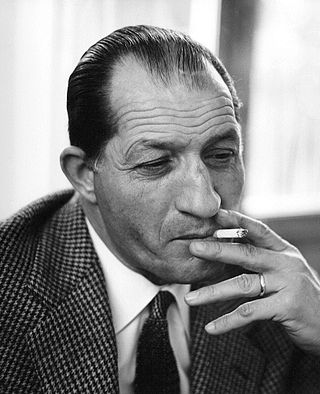
Gino Bartali,, nicknamed Gino the Pious and Ginettaccio, was a champion road cyclist. He was the most renowned Italian cyclist before the Second World War, having won the Giro d'Italia twice, in 1936 and 1937, and the Tour de France in 1938. After the war, he added one more victory in each event: the Giro d'Italia in 1946 and the Tour de France in 1948. His second and last Tour de France victory in 1948 gave him the largest gap between victories in the race.

The classic cycle races are the most prestigious one-day professional road cycling races in the international calendar. Some of these events date back to the 19th century. They are normally held at roughly the same time each year. The five most revered races are often described as the cycling monuments.

Claudio Chiappucci is a retired Italian professional cyclist. He was on the podium three times in the Tour de France general classification: second in 1990, third in 1991 and second again in 1992.

Milano–Torino is a semi classic European single day cycling race, between the northern Italian cities of Milan and Turin over a distance of 199 kilometres. The event was first run in 1876 making it the oldest classic race in the world. The event is owned by the RCS media group which owns the Italian sports daily La Gazzetta dello Sport. RCS also organises other top Italian cycling events such as the Giro d'Italia, Milan–San Remo and Tirreno–Adriatico. The race is ranked UCI ProSeries on the UCI continental calendar. The race was not run between the spring of 2007 and the autumn of 2012.
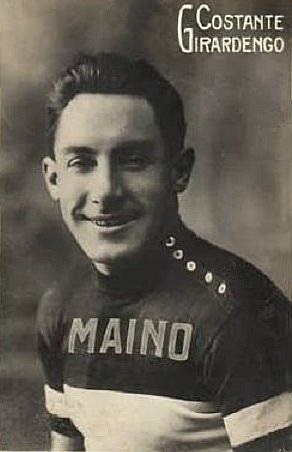
Costante Girardengo was an Italian professional road bicycle racer, considered by many to be one of the finest riders in the history of the sport. He was the first rider to be declared a "Campionissimo" or "champion of champions" by the Italian media and fans. At the height of his career, in the 1920s, he was said to be more popular than Mussolini and it was decreed that all express trains should stop in his home town Novi Ligure, an honour only normally awarded to heads of state.

Vincenzo Nibali is an Italian former professional road bicycle racer, who competed as a professional from 2005 to 2022. He is one of seven cyclists who has won all three of cycling's Grand Tours in their career – having won the 2010 Vuelta a España, the 2013 Giro d'Italia, the 2014 Tour de France and the 2016 Giro d'Italia.

The Monuments are five classic cycle races generally considered to be the oldest, hardest, longest and most prestigious one-day events in men's road cycling, with distances between 240 and 300 km.
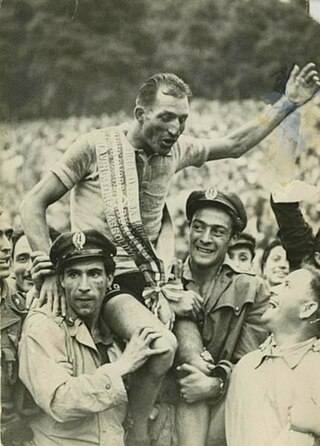
The 1946 Giro d'Italia was the 29th edition of the Giro d'Italia, organized and sponsored by the newspaper La Gazzetta dello Sport. The race began on 15 June in Milan with a stage that stretched 185 km (115 mi) to Turin, finishing back in Milan on 7 July after a 176 km (109 mi) stage and a total distance covered of 3,039.5 km (1,889 mi).
The Giro d'Italia is an annual stage race bicycle race primarily held in Italy, while also occasionally passing through nearby countries. The race was first organized in 1909 to increase sales of the newspaper La Gazzetta dello Sport; however it is currently run by RCS Sport. The race has been held annually since its first edition in 1909, except when it was stopped for the two world wars. As the Giro gained prominence and popularity the race was lengthened, and the peloton expanded from primarily Italian participation to riders from all over the world.

The 2015 Il Lombardia was a one-day cycling classic that took place around Lake Como in Lombardy in northern Italy on 4 October 2015. It was the 109th edition of the Il Lombardia one-day cycling race and was the final cycling monument of the 2015 season, as well as being the final race of the 2015 UCI World Tour. The race was organised by RCS Sport, who also organise the Giro d'Italia.

Legnano was an Italian professional cycling team active from 1906 to 1966. It is ranked as the 6th most successful cycling team in history. Many famous cyclists rode for the team including Alfredo Binda, Learco Guerra, Gino Bartali and Fausto Coppi. The team participated in the Giro d'Italia 46 times, won the team classification 11 times and earned 135 stage wins. It was sponsored by Italian bicycle motorcycle manufacturer Legnano.
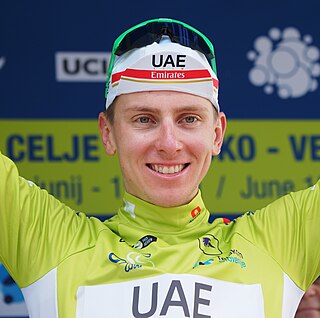
Tadej Pogačar is a Slovenian professional cyclist who currently rides for UCI WorldTeam UAE Team Emirates. He won the 2020 and 2021 editions of the Tour de France, winning three different jerseys during each Tour, a feat unseen in nearly four decades. Comfortable in time-trialing, one-day classic riding and grand-tour climbing, he has been compared to legendary all-round cyclists such as Eddy Merckx, Bernard Hinault and Fausto Coppi.
